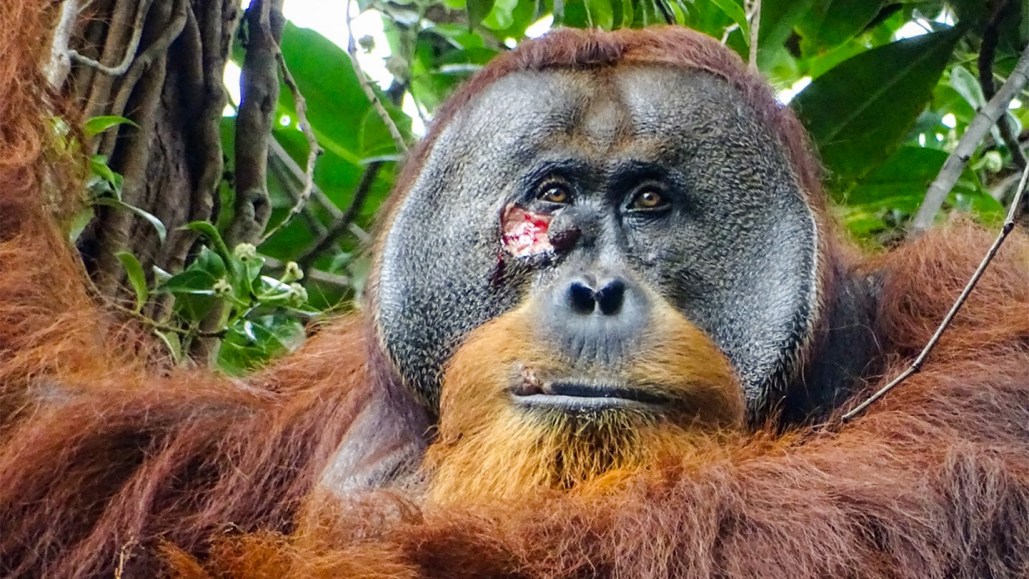An Orangutan's Use of a Medicinal Plant for a Face Wound

Orangutans, with their vivid eyes and pronounced beards and mustaches, easily live up to their name. Derived from Malay, "orang" translates to person, and "hutan" means forest. But the resemblance to humans extends beyond appearances. Interestingly, researchers have documented a male orangutan using a plant in treating a facial wound - a plant that also has uses in human medicine.
The significance lies in the fact that it is the first instance of any wild animal being observed administering wound care using a natural substance that possesses recognized medicinal benefits. The research findings were published in Scientific Reports on May 2.
Observations were made by field biologist Ulil Azhari on June 25, 2022. He was watching a Sumatran orangutan named Rakus, in the Suaq Balimbing research area located in Indonesia's Gunung Leuser National Park. The park is home to about 150 orangutans, and research on them has been carried out since 1994. Rakus was seen chewing a liana plant, locally referred to as Akar Kuning, and applying the chewed paste to a wound on his right cheek. This injury was likely a result of an altercation with another orangutan. Rakus repeated the application process several times over about seven minutes, then, akin to a bandage, pasted the intact liana pulp over his wound.
The Akar Kuning, or Fibraurea tinctoria, is known to possess various medicinal properties. The local population commonly uses it in traditional medicine, particularly for its antibacterial and anti-inflammatory properties.
Isabelle Laumer, a cognitive biologist at Germany's Max Planck Institute for Animal Behavior associated with the Suaq Project studying orangutans, was engrossed by the observation notes. Laumer stated, "He exclusively treated this wound and not any other body part, and this was repeated", highlighting Rakus's intentionality. The sheer fact that his wound had completely healed just five days following the observation, with no infection, gave her conviction that Rakus was intentionally using the liana plant to treat his wound.
Michael Huffman, a Nagasaki University zoologist who has invested decades in studying self-medication behavior in primates in Japan, says, “There’s ample literature about animals applying substances to areas that are in pain...” He follows up, though, declaring, “...this is the first published paper providing details of both the plant’s chemical properties and the treatment process in its entirety."
Laumer's hopes are that discoveries like these will inspire a greater appreciation for orangutans and their similarities to us, prompting more people to care about and protect them. The disappearance of all three endangered species of these apes would be a tragic loss to the world, she says.




